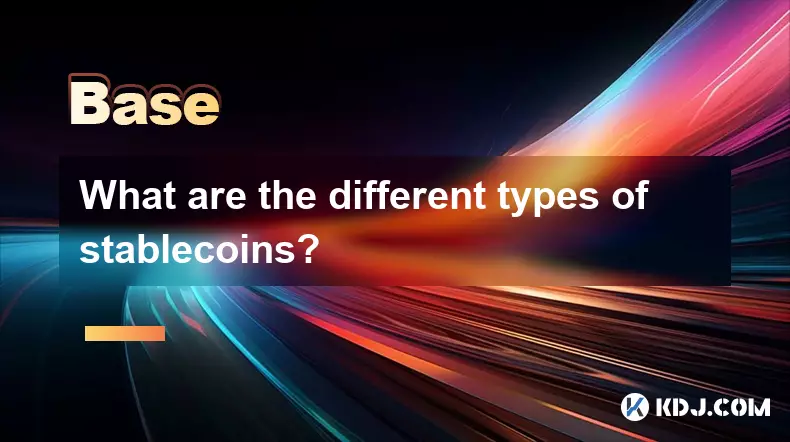-
 Bitcoin
Bitcoin $112100
0.77% -
 Ethereum
Ethereum $4474
3.78% -
 XRP
XRP $2.851
0.46% -
 Tether USDt
Tether USDt $1.000
0.01% -
 BNB
BNB $856.0
0.45% -
 Solana
Solana $209.3
1.04% -
 USDC
USDC $0.9998
-0.02% -
 Dogecoin
Dogecoin $0.2216
3.68% -
 TRON
TRON $0.3420
1.19% -
 Cardano
Cardano $0.8415
1.56% -
 Chainlink
Chainlink $23.79
1.74% -
 Hyperliquid
Hyperliquid $46.03
3.38% -
 Ethena USDe
Ethena USDe $1.001
0.04% -
 Sui
Sui $3.399
2.98% -
 Bitcoin Cash
Bitcoin Cash $599.8
3.03% -
 Stellar
Stellar $0.3628
-0.44% -
 Avalanche
Avalanche $25.24
4.29% -
 Cronos
Cronos $0.2809
9.58% -
 Hedera
Hedera $0.2203
0.68% -
 UNUS SED LEO
UNUS SED LEO $9.526
-0.04% -
 Litecoin
Litecoin $112.7
0.88% -
 Toncoin
Toncoin $3.188
0.41% -
 Shiba Inu
Shiba Inu $0.00001253
0.80% -
 Polkadot
Polkadot $3.891
2.61% -
 Uniswap
Uniswap $9.732
2.10% -
 Bitget Token
Bitget Token $4.971
-2.70% -
 Dai
Dai $0.0000
0.01% -
 World Liberty Financial
World Liberty Financial $0.2148
-8.62% -
 Aave
Aave $327.8
3.77% -
 Monero
Monero $270.0
1.47%
What are the different types of stablecoins?
Stablecoins maintain value through reserves, algorithms, or asset backing, offering stability in crypto markets while serving as key tools in DeFi and digital transactions.
Sep 04, 2025 at 08:36 am

Understanding the Core Categories of Stablecoins
1. Fiat-collateralized stablecoins are backed by traditional currencies such as the US dollar, euro, or yen. These reserves are held in banks or custodial accounts and are supposed to match the circulating supply one-to-one. Examples include USDT and USDC, which maintain their peg through regular audits and transparent reserve reporting.
2. Crypto-collateralized stablecoins are supported by other digital assets rather than fiat. Because the backing cryptocurrencies are often volatile, these stablecoins are typically over-collateralized. For instance, DAI is backed by Ethereum and other crypto assets deposited into smart contracts, ensuring stability even during price swings.
3. Algorithmic stablecoins do not rely on collateral but instead use algorithms and smart contracts to control supply. When the price drops below the peg, the system reduces supply by burning tokens. When it rises above, new tokens are minted. This mechanism mimics central bank monetary policy within decentralized frameworks.
4. Commodity-collateralized stablecoins are tied to physical assets like gold, silver, or oil. Each token represents a fraction of the underlying commodity stored in secure vaults. PAX Gold (PAXG) is a prime example, where each token equals one fine troy ounce of gold.
5. Hybrid stablecoins combine multiple mechanisms to enhance stability. They may use partial collateral and algorithmic adjustments to maintain the peg. These models aim to balance decentralization, trust, and resilience against market shocks.
Key Advantages of Each Stablecoin Model
1. Fiat-backed stablecoins offer simplicity and high liquidity, making them ideal for traders and remittances. Their direct link to established currencies ensures predictable value and widespread acceptance across exchanges.
2. Crypto-collateralized versions promote decentralization and permissionless access, allowing users to generate stable value without relying on banks. They integrate seamlessly with DeFi protocols, enabling lending, borrowing, and yield generation.
3. Algorithmic types eliminate the need for custodians and third-party audits, reducing counterparty risk. Their fully automated nature aligns with blockchain’s trustless philosophy, though they face challenges during extreme volatility.
4. Commodity-backed stablecoins provide exposure to tangible assets while retaining blockchain’s efficiency. Investors gain inflation-resistant instruments without managing physical storage or logistics.
p>5. Hybrid models attempt to overcome limitations of single-approach designs. By blending collateral and algorithmic controls, they aim for greater adaptability in turbulent markets.
Risks and Challenges Across Stablecoin Types
1. Fiat-collateralized coins face regulatory scrutiny and dependence on centralized entities. If audits are not rigorous or reserves are mismanaged, confidence can collapse rapidly, as seen in certain market disruptions.
2. Crypto-backed variants are vulnerable to liquidation cascades during sharp price drops. If the value of collateral falls too quickly, automated systems may fail to adjust in time, threatening the peg.
3. Algorithmic stablecoins require consistent market participation to function. Low trading volume or loss of confidence can break the feedback loop, leading to de-pegging and potential collapse.
4. Commodity-linked tokens depend on the integrity of storage and verification processes. Any doubt about the authenticity or accessibility of the underlying asset damages trust in the token.
5. Hybrid systems introduce complexity that can obscure risk exposure. Users may struggle to assess the true backing, especially when multiple variables influence stability.
Frequently Asked Questions
How do stablecoins maintain their value?Stablecoins use various methods—holding reserves, over-collateralization, algorithmic supply adjustments, or asset backing—to align their market price with a target value, usually $1.
Are all stablecoins safe to use?Not all stablecoins carry the same level of risk. Those with transparent reserves and strong governance are generally more reliable. Users should research audit reports and backing assets before using any stablecoin.
Can stablecoins lose their peg?Yes, stablecoins can temporarily or permanently lose their peg due to market panic, reserve shortfalls, or flaws in their stabilization mechanism. Historical examples show that even major stablecoins can experience de-pegging under stress.
What role do stablecoins play in DeFi?Stablecoins serve as a primary medium of exchange and unit of account in decentralized finance. They enable lending, borrowing, trading, and yield farming without exposing users to the volatility of cryptocurrencies like Bitcoin or Ethereum.
Disclaimer:info@kdj.com
The information provided is not trading advice. kdj.com does not assume any responsibility for any investments made based on the information provided in this article. Cryptocurrencies are highly volatile and it is highly recommended that you invest with caution after thorough research!
If you believe that the content used on this website infringes your copyright, please contact us immediately (info@kdj.com) and we will delete it promptly.
- C2 Blockchain's DOG Coin Gambit: Bridging Memes and Bitcoin Assets
- 2025-09-04 12:25:13
- Crypto Treasury, Startup Strategies, & Investment Opportunities: A New Yorker's Take
- 2025-09-04 09:05:12
- Moca Network's $20M Portfolio: A New Era for Community Rewards?
- 2025-09-04 09:05:12
- XDC Network Price Prediction 2026: Is XDC the Dark Horse of Crypto?
- 2025-09-04 08:25:15
- BullZilla Roar, Bonk Stablecoin, and Solana Alpenglow: The Evolution of Meme Coins
- 2025-09-04 09:25:17
- TRON, GDP Data, and the Commerce Department: A Blockchain Milestone
- 2025-09-04 09:25:17
Related knowledge

What is "backtesting" a crypto trading strategy?
Sep 03,2025 at 10:55am
Understanding Backtesting in Crypto TradingBacktesting is the process of evaluating a trading strategy by applying it to historical market data. Trade...

What is a "crypto trading bot" and do they work?
Sep 02,2025 at 04:19pm
Understanding Crypto Trading Bots1. A crypto trading bot is a software application designed to automate the process of buying and selling cryptocurren...

What is a "copy trading" platform?
Sep 02,2025 at 07:00pm
Understanding Copy Trading in the Cryptocurrency Space1. A copy trading platform allows users to automatically replicate the trades of experienced inv...

What is "social trading" for crypto?
Sep 03,2025 at 09:00pm
Understanding Social Trading in the Cryptocurrency Space1. Social trading refers to a method where investors observe, follow, and automatically replic...

What is a "crypto basket" or index?
Sep 03,2025 at 07:01am
Understanding Crypto Baskets and Their Role in Digital Asset Investment1. A crypto basket refers to a curated collection of multiple cryptocurrencies ...

What are "impermanent loss" calculators?
Sep 03,2025 at 12:00pm
Understanding Impermanent Loss in Decentralized Finance1. Impermanent loss is a phenomenon that affects liquidity providers in decentralized exchanges...

What is "backtesting" a crypto trading strategy?
Sep 03,2025 at 10:55am
Understanding Backtesting in Crypto TradingBacktesting is the process of evaluating a trading strategy by applying it to historical market data. Trade...

What is a "crypto trading bot" and do they work?
Sep 02,2025 at 04:19pm
Understanding Crypto Trading Bots1. A crypto trading bot is a software application designed to automate the process of buying and selling cryptocurren...

What is a "copy trading" platform?
Sep 02,2025 at 07:00pm
Understanding Copy Trading in the Cryptocurrency Space1. A copy trading platform allows users to automatically replicate the trades of experienced inv...

What is "social trading" for crypto?
Sep 03,2025 at 09:00pm
Understanding Social Trading in the Cryptocurrency Space1. Social trading refers to a method where investors observe, follow, and automatically replic...

What is a "crypto basket" or index?
Sep 03,2025 at 07:01am
Understanding Crypto Baskets and Their Role in Digital Asset Investment1. A crypto basket refers to a curated collection of multiple cryptocurrencies ...

What are "impermanent loss" calculators?
Sep 03,2025 at 12:00pm
Understanding Impermanent Loss in Decentralized Finance1. Impermanent loss is a phenomenon that affects liquidity providers in decentralized exchanges...
See all articles

























































































